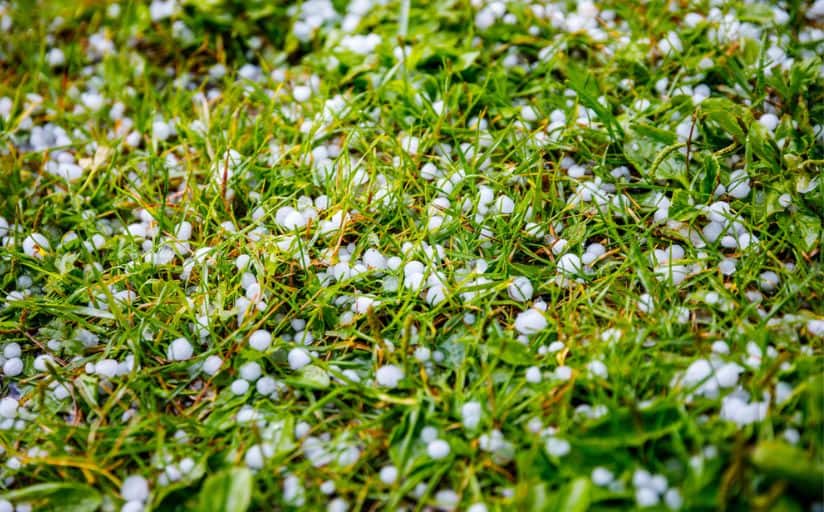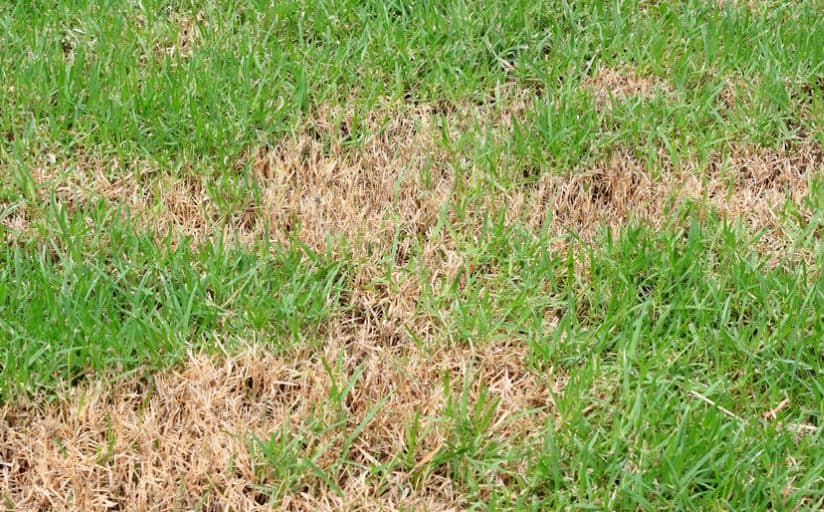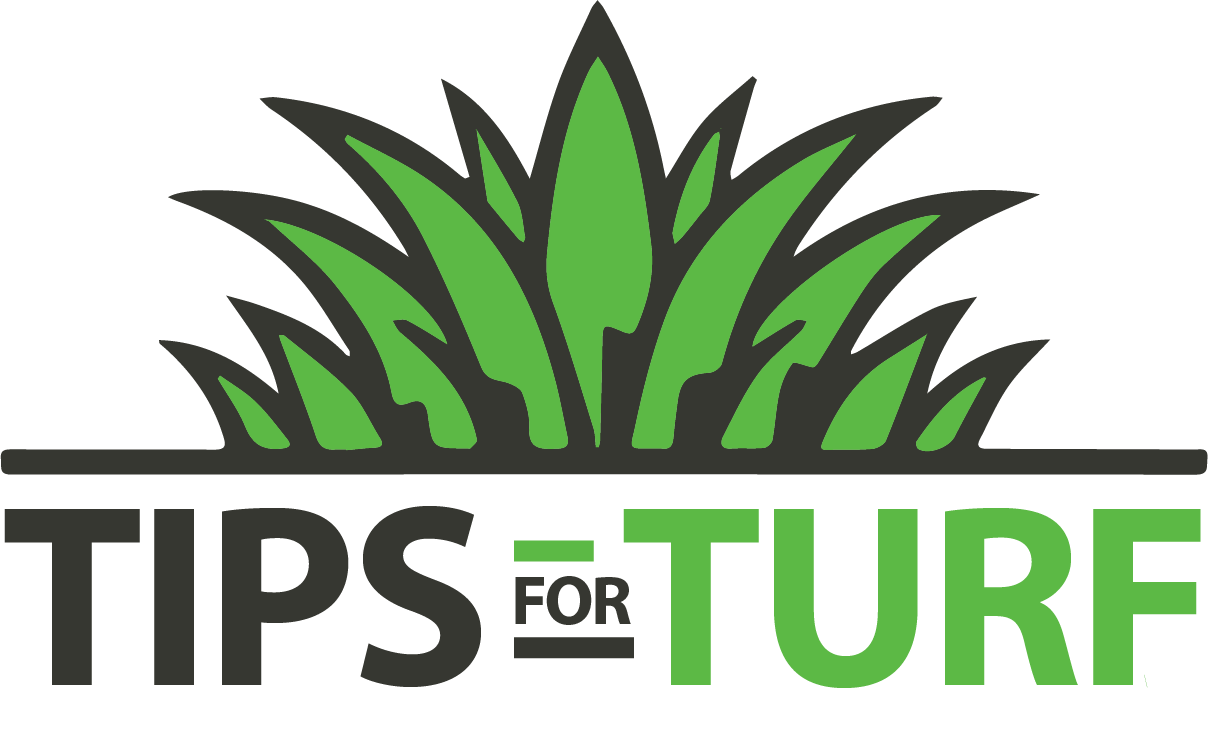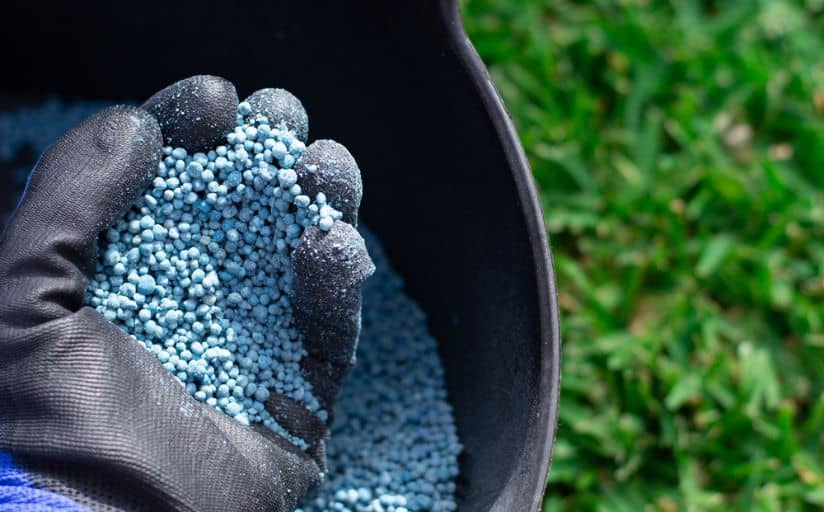Winter lawn care often confuses many homeowners. It’s easy to assume that grass doesn’t need attention during the colder months, but that’s not entirely true. Believe it or not, fertilizing your lawn in the winter can make a huge difference.
(If you make a purchase using the links in this post, we may earn a commission.)
Applying winter fertilizer strengthens your lawn’s roots, builds up nutrient reserves, and sets it up for a successful spring. But timing, the type of fertilizer, and the application method all matter.
Instead of waiting for spring to help struggling grass, giving your lawn some love during the colder months builds a solid foundation for future growth. Let’s dive into why and how you should fertilize your lawn in winter.
What Are the Benefits of Fertilizing Your Lawn in the Winter?
When you fertilize in winter, you’re focusing on the roots rather than the grass’s surface growth. The nutrients you apply will help strengthen the root system, which helps the grass handle extreme weather and foot traffic.
One key nutrient in winter fertilizers is potassium. It helps the roots absorb nutrients more efficiently, which is essential for their overall health.
Even though your grass might be dormant, winter fertilizing helps your lawn bounce back quickly once the temperatures rise. With all those stored nutrients, your lawn will be thicker, greener, and better at fighting off weeds and early spring diseases.

When Is the Best Time to Apply Winter Fertilizer?
The best time to fertilize lawns in the winter is when the grass growth slows but the ground hasn’t frozen yet. In many areas, this happens between late fall and early winter—around November or December.
For colder climates, it’s best to fertilize after the final mow of the season, when soil temperatures are still above freezing. In milder climates, you can extend your fertilization into early winter.
Basically, avoid fertilizing after snowfall or when the lawn is frozen because the nutrients won’t properly sink into the soil, and you’ll just waste the product. If you fertilize too early, you risk promoting surface growth, which is more vulnerable to frost, freezing, and stress from the cold. But if you wait too long, the fertilizer might wash away before it can help your lawn.
What Type of Fertilizer Should You Use in the Winter?
Slow-release winter fertilizers are ideal. They typically contain a high level of potassium to help your lawn’s roots during the colder months. Plus, the slow-release formula means the nutrients are steadily absorbed over time, ensuring your lawn is strong and ready for a vibrant spring.
Most winter fertilizers are labeled “winterize” or “winter guard,” and they usually come with an NPK ratio like 10-0-20 or 8-12-16. (You don’t have to stick to these ratios. They are just a guide.) These formulas focus on long-term root health rather than quick surface greening.
Here are a couple of options we suggest:
BUY – Green Thumb Winterizer Lawn Fertilizer (32-0-10)
BUY – Jonathan Green Winter Survival Fall Lawn Food (10-0-20)
How Does Winter Fertilization Help Your Lawn in the Spring?
Winter fertilization isn’t just about the cold months. It actually sets your lawn up for spring. When you feed your lawn during its dormancy, it stores nutrients that fuel the early growth of grass. This means your lawn will green up quicker and more evenly.
A well-fed lawn is also more resilient to diseases, like fungal infections, that often affect early spring grass. And because winter-fed lawns have stronger root systems, they’re more prepared for the summer heat and drought that follow.
In fact, winter-fed lawns can be up to 15% thicker in the spring than those that aren’t fertilized, leading to a lush, weed-resistant yard.
Are There Risks to Fertilizing Your Lawn in the Winter?
While winter fertilization offers great benefits, applying it incorrectly can cause problems. If you fertilize a frozen or snow-covered lawn, the nutrients won’t sink in properly, and they could run off into nearby waterways, which wastes fertilizer and harms the environment. Over-fertilizing can burn the grass or encourage fungal growth.
The key is to apply the fertilizer at the right time and in the right amount. Using slow-release formulas helps mitigate the risks by releasing nutrients gradually.

How Often Should You Fertilize Your Lawn During the Winter Months?
Winter fertilization is a one-time deal, usually in late fall or early winter. Unlike the frequent feeding in spring and summer, winter feeding is all about setting your lawn up with a solid nutrient reserve for the dormant months. Over-fertilizing can cause nutrient overload or even burn your grass, which is harmful to the environment and your lawn.
Early Winter Fertilization Is the Secret to a Healthier Lawn
Fertilizing your lawn in winter strengthens roots, improves soil health, and ensures thick, green grass when spring comes around.
But be careful not to overdo nitrogen in the winter, as too much can encourage surface growth that’s vulnerable to frost and stress. Use our lawn fertilization calculator to find the perfect amount of nitrogen for your lawn’s needs!

